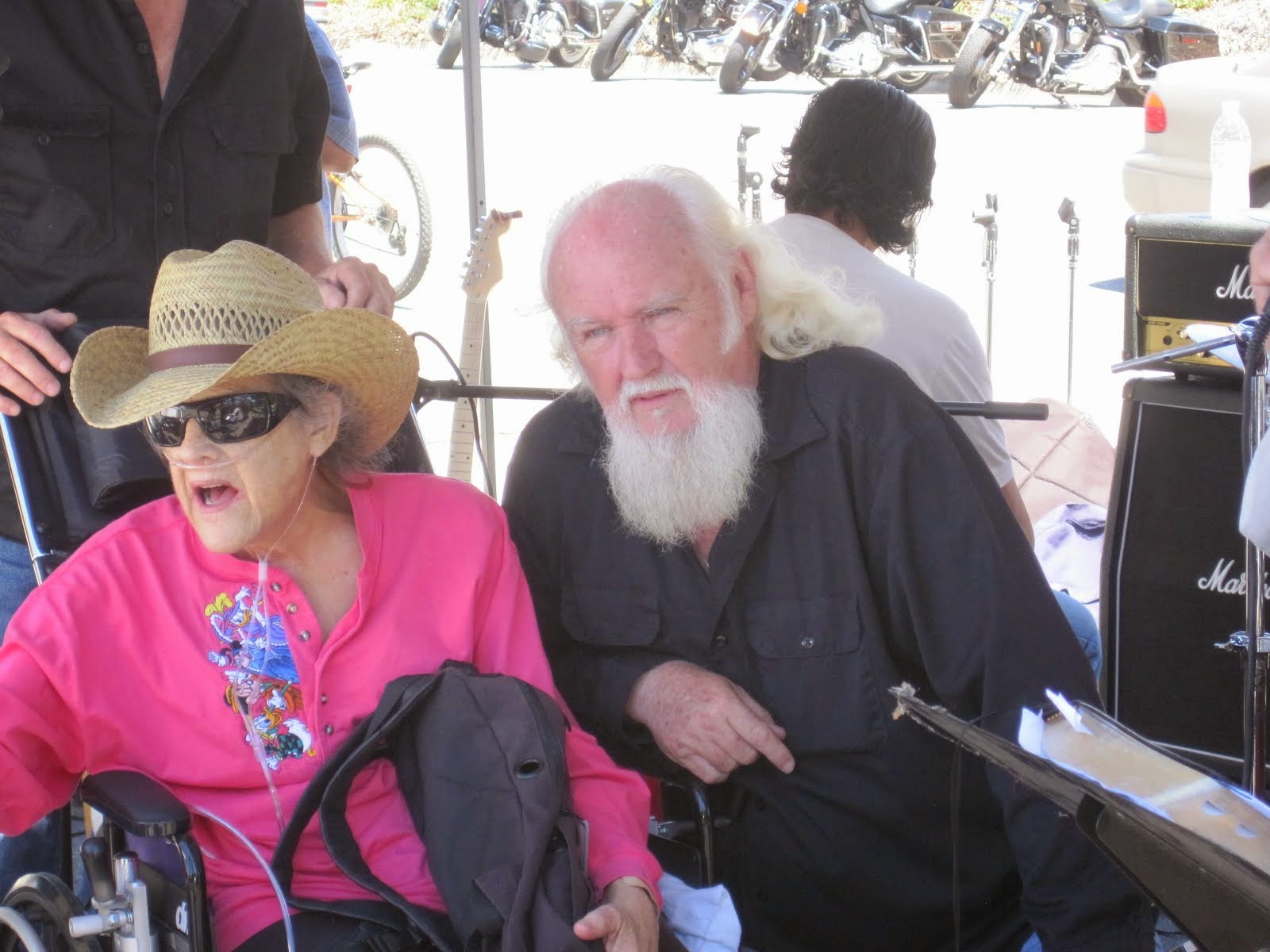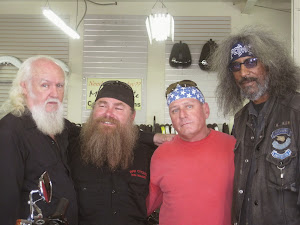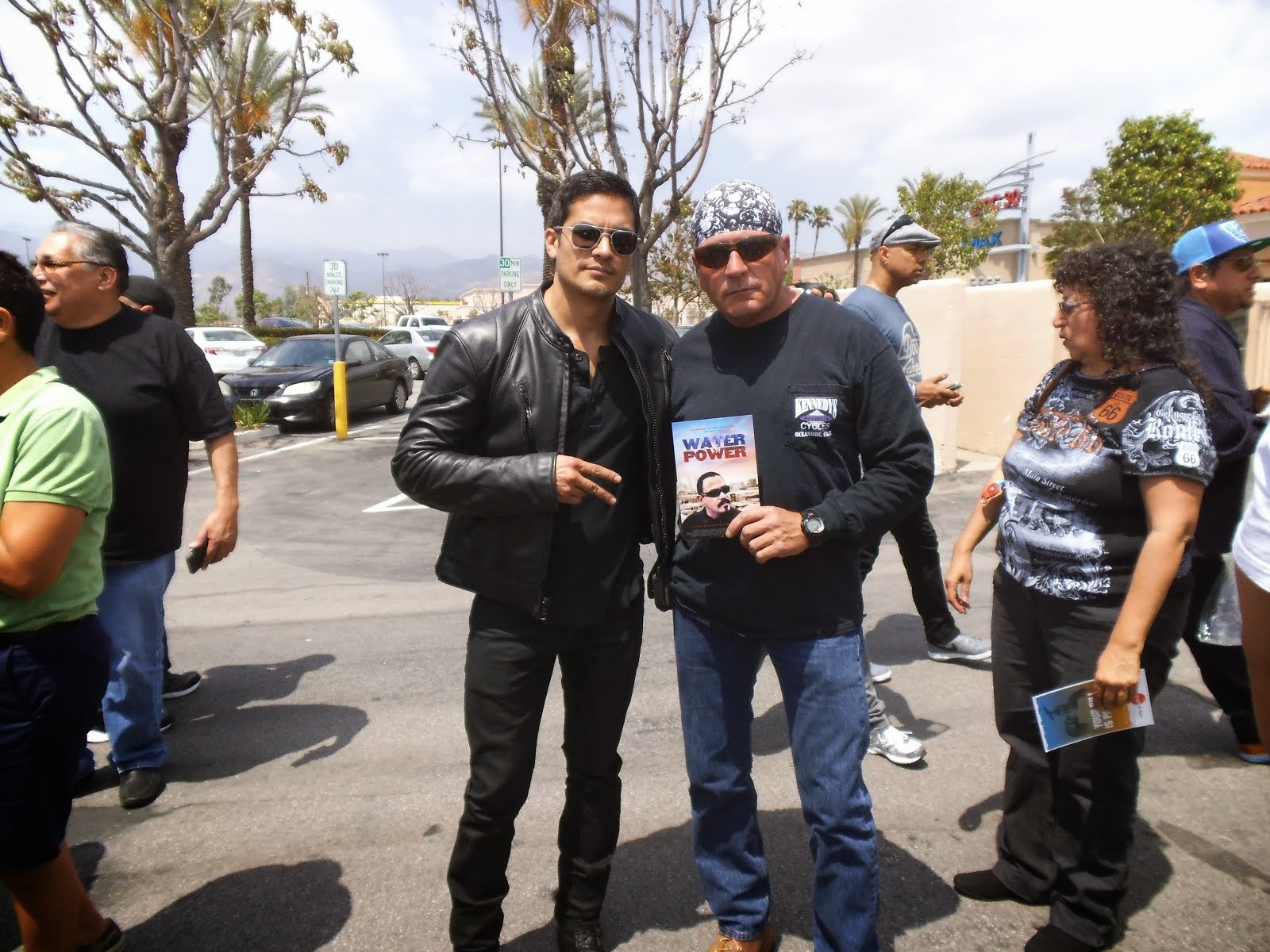Motorcycles are everywhere, but who made the bumper sticker?
http://www.boston.com/cars/newsandreviews/overdrive/2010/04/motorcycles_are_everywhere_but.html
(Bill Griffith for The Boston Globe)
Variants of the yellow "Motorcycles are Everywhere" label have been around since 1982.
"Motorcycles are Everywhere." That's what those ubiquitous yellow bumper stickers (and signs) say. This spring, it's especially true. Long stretches of nice early weather brought out motorcyclists in droves, starting in late March.
It's the opposite of last spring when there was little nice weather and a lot of motorcyclists didn't get riding until July.
"There are more bikes out on the road early this spring," said Tim Smith, who has operated Seacoast Cycles in Newburyport since 1989. "The nice weather definitely has brought a lot of riders out. That doesn't mean we won't have the usual last-minute rush for stickers before the May 31 deadline though."
The early start to the riding season has motorcyclists thinking safety, which brings us back to those yellow signs and bumper stickers, which also warn "Check twice — save a life."
(Bill Griffith for The Boston Globe)
Paul Cote, a motorcycle safety advocate, may as well be the Massachusetts bikers’ best friend.
They were the creation of Bob Doiron, then of Somerville, in 1982. He was one of the founders of what is now the Massachusetts Motorcycle Association (MMA). Now retired and living in Moultonborough, N.H., Doiron transferred rights to the signs/stickers to motorcycle activist Paul Cote of Amesbury.
Cote is the Massachusetts bikers' best friend, an irrepressible spokesman who lobbies for safety and fair insurance rates for riders and against proposed restrictive legislation.
There were 182,215 motorcycles registered in the state as of last September. The number sounds impressive until you realize there are 4.3 million cars on the state's roads.
Those numbers make it easy for bikers to get overlooked on one hand (safety programs, insurance rates) and singled out on the other hand (restrictions on noise, passengers, and equipment).
Where most states designate May as a motorcycle safety awareness month, the MMA has successfully argued that the last week in March and all of April be designated in Massachusetts, and a law enacted in 2002 calls for the governor to issue an annual Motorcycle Safety Awareness proclamation. "Plus we continue to support all those May programs, too," says Cote.
"We've already had three fatalities this spring (as of April 8). That scares me," says Cote, who annually reviews accident reconstruction reports and state data provided by the Registry of Motor Vehicles to offer suggestions on following years' safety messages.
Cote monitors government agencies, being the voice that cries, "What about us?" Why does he do it?
"Everyone has a flicker of that flame inside them, but life tries to extinguish it. There are times when you have to make the decision to either live on your knees or die standing up. When I find things worth fighting about, I try to rally people," says Cote. "I know that if you work the system, the system will work. But sometimes you've got to light a fire."
"The Registry of Motor Vehicles is in charge of safety and training," says Cote. "Two dollars from every motorcycle registration is supposed to go into that fund, but it's subject to legislative appropriation."
Cote urges cyclists to look at their insurance policies and make sure they're sufficiently covered in Parts 3 (Bodily Injury Caused By An Uninsured Auto), 5 (Optional Bodily Injury to Others), and 12 (Bodily Injury Caused By An Underinsured Auto). "Everyone wants lots of insurance after the accident," he says. "Because when that accident happens, it's usually not good. It only costs about $40 to carry an extra $100,000 of coverage."
Cote, Alan Kline of Lynn, and Betsy Lister of Medford, have testified at insurance rate hearings since 2001, questioning excessive rates insurers charged riders. Cote's research found that in 2004 the insurance industry took in $48 million in motorcycle premiums and spent less than $24 million in claims, expenses, commissions, and other costs. "That's 100 percent profit," he says.
In 2007 and 2008, Plymouth Rock Assurance gave the MMA a total of $29,000 in safety grants to fund sign placement. "Roughly two thirds of the state's 353 cities and towns gave us permission to place signs and banners that first year," said Cote. "The Plymouth Rock people said it was one of the most effective campaigns, dollar for dollar, they'd ever had. If those signs saved just one life and claim, they more than paid for themselves."
While spreading the word.
According to the Massachusetts Registry of Motor Vehicles, an accident with a motorcycle is more likely when:
You are making a left turn in front of a rider.
A motorcyclist is riding in your blind spot.
There are hazardous road conditions. Potholes, wet leaves, railroad tracks, and other obstructions may force a motorcyclist to take an action you don't expect.
You have an obstructed line of sight. Sport utility vehicles, delivery vans, and large trucks may block motorcyclists from your view.
skip to main |
skip to sidebar




Bill & Annie

Art Hall & Rusty


NUFF SAID.......


































































OOHRAH

ONCE A MARINE,ALWAYS A MARINE

GIVING BACK


MOUNT SOLEDAD














BIKINI BIKE WASH AT SWEETWATER










FRIENDS





BILL,WILLIE G, PHILIP










GOOD FRIENDS


hanging out

brothers


GOOD FRIENDS

Good Friends

Hanging Out




Bill & Annie
Art Hall & Rusty
Art Hall & Rusty


NUFF SAID.......



















NUFF SAID......



























Mount Soledad




BALBOA NAVAL HOSPITAL
RUSTY DANNY

ANNIE KO PHILIP

PHILIP & ANNIE

OUT & ABOUT

OOHRAH...

OOHRAH
ONCE A MARINE,ALWAYS A MARINE

ONCE A MARINE,ALWAYS A MARINE
American Soldier Network GIVING BACK

GIVING BACK
CATHY & BILL
PHILIP & DANNY & BILL

MOUNT SOLEDAD
bills today
EMILIO & PHILIP
WATER & POWER
WATER & POWER
bootride2013



BIKINI BIKE WASH AT SWEETWATER







ILLUSION OPEN HOUSE

FRIENDS


GOOD FRIENDS



BILL,WILLIE G, PHILIP









GOOD FRIENDS

GOOD FRIENDS
Friends
- http://www.ehlinelaw.com/losangeles-motorcycleaccidentattorneys/
- Scotty westcoast-tbars.com
- Ashby C. Sorensen
- americansoldiernetwork.org
- blogtalkradio.com/hermis-live
- davidlabrava.com
- emiliorivera.com/
- http://kandymankustompaint.com
- http://pipelinept.com/
- http://womenmotorcyclist.com
- http://www.ehlinelaw.com
- https://ammo.com/
- SAN DIEGO CUSTOMS
- www.biggshd.com
- www.bighousecrew.net
- www.bikersinformationguide.com
- www.boltofca.org
- www.boltusa.org
- www.espinozasleather.com
- www.illusionmotorcycles.com
- www.kennedyscollateral.com
- www.kennedyscustomcycles.com
- www.listerinsurance.com
- www.sweetwaterharley.com

Hanging out

hanging out
Good Friends

brothers
GOOD FRIENDS

EMILIO & SCREWDRIVER

GOOD FRIENDS
Danny Trejo & Screwdriver

Good Friends
Navigation
Welcome to Bikers of America, Know Your Rights!
“THE BIKERS OF AMERICA, THE PHIL and BILL SHOW”,
A HARDCORE BIKER RIGHTS SHOW THAT HITS LIKE A BORED AND STROKED BIG TWIN!
ON LIVE TUESDAY'S & THURDAY'S AT 6 PM P.S.T.
9 PM E.S.T.
CATCH LIVE AND ARCHIVED SHOWS
FREE OF CHARGE AT...
BlogTalkRadio.com/BikersOfAmerica.
Two ways to listen on Tuesday & Thursday
1. Call in number - (347) 826-7753 ...
Listen live right from your phone!
2. Stream us live on your computer: http://www.blogtalkradio.com/bikersofamerica.
A HARDCORE BIKER RIGHTS SHOW THAT HITS LIKE A BORED AND STROKED BIG TWIN!
ON LIVE TUESDAY'S & THURDAY'S AT 6 PM P.S.T.
9 PM E.S.T.
CATCH LIVE AND ARCHIVED SHOWS
FREE OF CHARGE AT...
BlogTalkRadio.com/BikersOfAmerica.
Two ways to listen on Tuesday & Thursday
1. Call in number - (347) 826-7753 ...
Listen live right from your phone!
2. Stream us live on your computer: http://www.blogtalkradio.com/bikersofamerica.
Good Times
Hanging Out

Key Words
- about (3)
- contact (1)
- TENNESSEE AND THUNDER ON THE MOUNTAIN (1)
- thinking (1)
- upcoming shows (2)
Blog Archive
-
▼
2010
(4242)
-
▼
May
(300)
- The Truth about SB1070 and the New Arizona Law
- Minipulated News
- OFF THE WIREHONOR RECIPIENT, EL CAJON, CA, THURSDA...
- Outlaws club member pleads in drug investigation
- Sons of Anarchy: Season Two Arrives on DVD and Blu...
- ABATE LOCAL 6 Dates and info for the coming month
- “THE BIKERS OF AMERICA,THE PHIL AND BILL SHOW”
- MEcalm
- New York Motorcycle Club Shut Down
- 1,000 bikers rally, seek reforms in Ottawa Hills
- The Feds’ Illegal/Unauthorized/Murderous War on Bi...
- Biker Lowdown Radio Show Bike Night
- Ottawa Hills officer found guilty in biker shooting
- Ohio Bike Week ready to roar
- Highwaymen racketeering trial heads to jury
- Manville officials mull stricter regulations after...
- “Bikers Against Discrimination” Executive Director...
- Why Are Barney Phife Cops Being Outfitted With Ges...
- THAN YOU TO ALL U.S. SERVICEMEN/WOMEN WHO PAID THE...
- No title
- Run for the Wall: Veteran rides to D.C. to honor t...
- From the MASS AG's office regarding auto insurance
- Two Quick & Easy Cross-Examination Tips
- Advice for everyone..
- business meeting
- ABATE of Washington
- Sin City Crew need`s our help and support
- Action Alert: SB 435 - Motorcycle Smog Bill - Sche...
- Speculation about Charleston crash
- Motorcycle rally coming to Simpsonville
- Highwaymen lawyers, prosecutors clash in closing a...
- Hell on wheels?
- We Care Ride 2010
- Thoughts from Fran
- Readin', writin' and ridin'
- OF THE WIREhttp://editorial.autos.msn.com/blogs/au...
- The Fight Like A Girl Poker Run and Games Weekend
- Harley-Davidson Museum Hosts Evel Knievel Exhibit
- Press Release ABATE of Florida
- The Legendary Buffalo Chip to Host World Famous Ra...
- illegal video
- Sand on the road
- Two Quick & Easy Cross-Examination Tips
- "New York Rider - B.A.D. Day on the Mountain"
- Bike club ready for OC return during holiday
- recording in public
- EXCITING FULL THROTTLE NATION SHOW THIS WEEK!
- Helmets Can Save Your Life *Motorcycles Articles
- **Calvin Janisch recalled as having it all
- Run for the Wall coming to town
- ATTIKA is back at the Viper Room again June 11th.
- CHP highlights motorcycle safety *
- WASHINGTON DC:Rolling Thunder 2010 Memorial Day We...
- Breaking Bad: CA vs. the Other States
- Defective Helmet
- Simpsonville to add extra patrols for motorcycle r...
- 1,000 bikers rally, seek reforms in Ottawa Hills
- Hells Angels Jammin' with 81
- Motorcycle rally coming to Simpsonville
- Motorcyclists protest Quebec insurance hikes
- SB 435 scheduled for vote
- ALERT: California Volunteers Needed
- California vs Texas....
- NHTSA Update
- more motorcycle awareness messages
- Rolling Thunder means look out for motorcycles
- Australia - Second Time he has done this
- Myrtle Beach area officials lay out Bikefest plans
- Do You Know Where Your EPA Stamp Is?
- Highwaymen lawyers, prosecutors clash in closing a...
- Hell on wheels?
- Miami-Dade police hunt for driver in hit-run with ...
- RECALL:ADVANCED CARBON COMPOSITES EXT MOTORCYCLE H...
- Phil Horne has become quite a champion
- Janet Hogan says "THANKS !"
- Terrorist attack in Missouri
- New Details in Fatal Motorcycle Crash
- New York Freedom Riders New York Legislation and n...
- Randolph native and Vietnam veteran killed outside...
- Driver guilty in death of Haverhill couple on cycle
- Ohio Bike Week ready to roar
- Like minded thinkers!
- Motorcyclists Need To Raise A Stink When Cars Hit ...
- Motorcyclists gather in Mesa to raise awareness
- New Details in Fatal Motorcycle Crash
- Maryland Citizens Face Felony Charges for Recordin...
- Motorcycle rally will benefit troops
- Why Are Barney Phife Cops Being Outfitted With Ges...
- A mother’s nightmare
- No bail for men charged in officer's death Suspect...
- Make sure officer did not die in vain
- Slain police officer was trying to save his neighb...
- Motorcycle dealers grit teeth through bumpy downturn
- Keeping motorcycle safety on track
- Pocono Mountains Buffalo Soldiers Motorcycle Club ...
- Hot Leathers: Biker Rally at the Rock 3
- Moon's Custom Cycles closes in Ignacio
- B.C. appeal court sides with Hells Angel associate...
- Local BACA Members Make Big Impact
- Sin City Crew need our help and support
-
▼
May
(300)
Bikers of America, Know Your Rights!... Brought to you by Phil and Bill
Philip, a.k.a Screwdriver, is a proud member of Bikers of Lesser Tolerance, and the Left Coast Rep
of B.A.D (Bikers Against Discrimination) along with Bill is a biker rights activist and also a B.A.D Rep, as well, owner of Kennedy's Custom Cycles
